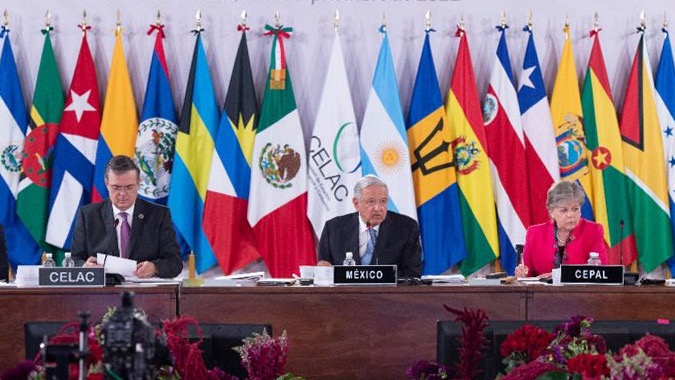Combating the Wildfire Crisis: A Pan-American Approach to a Global Challenge
The escalating global climate crisis, evidenced by rising temperatures and altered precipitation patterns, has significantly increased the frequency and intensity of wildfires across North and South America. This poses a considerable threat to biodiversity, human populations, and socio-economic stability. The devastating consequences necessitate a unified, proactive, and innovative approach to wildfire risk management, grounded in established ecological and disaster management theories. This article proposes a comprehensive framework for bolstering preparedness and response efforts across the Americas, drawing upon established principles of risk management, resilience theory, and collaborative governance.
1. Comprehensive Risk Assessment and Predictive Modeling: Understanding the spatial and temporal dynamics of wildfire risk is paramount. This involves employing advanced Geographic Information Systems (GIS) and predictive modeling techniques, integrating factors such as fuel loads, topography, weather patterns (incorporating climate change projections), and historical fire data. This approach, rooted in the principles of risk assessment and management, allows for the prioritization of resources and the development of targeted mitigation strategies. A real-world application would be utilizing sophisticated climate models coupled with high-resolution satellite imagery to map areas with the highest probability of future wildfire outbreaks. The resulting risk maps can then guide preventative measures and resource allocation.
2. Proactive Fuel Management and Ecosystem Restoration: Investing in preventative measures, aligned with ecological restoration principles, is significantly more cost-effective than reactive firefighting. This includes employing controlled burns (prescribed fire) in accordance with ecological best practices to reduce fuel loads and promote landscape resilience. Furthermore, the implementation of sustainable forestry practices and the restoration of degraded ecosystems enhance natural firebreaks and limit wildfire spread. A practical example is the application of the ecosystem services framework to identify and protect natural firebreaks, such as riparian zones and wetlands, while simultaneously restoring degraded areas to improve overall ecosystem health and fire resistance.
3. Enhanced Early Warning Systems and Technological Advancements: Early detection and rapid response are crucial to effective wildfire suppression. This involves integrating advanced remote sensing technologies (satellite imagery, drones) with ground-based sensor networks to establish a comprehensive early warning system. Furthermore, investment in sophisticated wildfire behavior modeling and prediction tools allows for more accurate forecasting of fire spread, facilitating timely evacuations and resource deployment. The development and deployment of AI-powered predictive models, drawing upon machine learning principles, could greatly improve accuracy and efficiency in early warning systems.
4. Strengthening Interagency and Cross-border Collaboration: Effective wildfire management necessitates a collaborative governance framework. This involves establishing clear communication channels, shared data platforms, and standardized protocols for information exchange among governmental agencies at all levels (national, regional, and local), firefighting services, and indigenous communities. Regular joint training exercises and the development of collaborative incident command structures will strengthen interoperability and enhance response capabilities. A successful example is the establishment of regional task forces that facilitate the cross-border movement of firefighting resources and expertise in the face of major wildfire events.
5. Community Engagement and Capacity Building: Engaging and empowering local communities is vital for building resilience. This requires comprehensive fire safety education programs tailored to diverse populations (considering linguistic and cultural contexts and accessibility needs), the establishment of community-based fire response teams, and the development of robust community-level evacuation plans. Regular community drills and simulations, grounded in social learning theory, enhance preparedness and ensure effective evacuation procedures during emergencies.
6. Integration of Indigenous Knowledge and Traditional Practices: Indigenous communities possess invaluable traditional ecological knowledge (TEK) regarding fire management. This TEK, built upon centuries of experience, must be actively integrated into modern wildfire management strategies. This involves consulting with Indigenous leaders, incorporating their knowledge into decision-making processes, and supporting Indigenous-led fire management initiatives. This approach not only enhances the effectiveness of wildfire management but also promotes environmental justice and respects the rights of Indigenous peoples.
7. Post-fire Ecosystem Restoration and Long-Term Sustainability: Post-fire recovery is critical for long-term ecosystem health and resilience. This requires comprehensive reforestation programs tailored to the specific ecological context, restoration of degraded habitats, and strategies to enhance biodiversity. Post-fire land management strategies should also consider climate change projections and future wildfire risks. A case study may include using principles of ecological succession to guide reforestation, prioritizing native species that are better adapted to changing climatic conditions.
8. Public Awareness Campaigns and Advocacy for Supportive Policies: Educating the public about wildfire risk, causes, and mitigation strategies is crucial. Public awareness campaigns need to communicate the role of climate change in intensifying wildfire risk and advocate for policies to reduce greenhouse gas emissions and support sustainable land management practices. This requires effective communication strategies that translate complex scientific information into accessible and engaging formats. Advocacy for supportive legislation and policies that prioritize wildfire risk reduction and ecosystem protection must also be a key element of the strategy.
Conclusion and Recommendations: The escalating wildfire crisis in the Americas demands a transformative shift towards proactive and collaborative management strategies. This requires a multi-faceted approach combining advanced technology, ecological restoration, community engagement, and cross-border collaboration. Investing in comprehensive risk assessments, predictive modeling, and early warning systems is crucial for timely response and resource allocation. Furthermore, integrating traditional ecological knowledge and fostering a culture of preparedness through community-based initiatives will enhance resilience. Future research should focus on developing more sophisticated predictive models incorporating climate change projections, refining ecosystem restoration techniques for fire-prone landscapes, and evaluating the effectiveness of different community engagement strategies. The long-term success of these initiatives hinges on sustained political will, collaborative governance, and a commitment to a more sustainable and resilient future for the Americas.
Reader Pool: Considering the multifaceted nature of the wildfire crisis, how can regional cooperation be further enhanced to optimize resource allocation and minimize the ecological and socio-economic impacts of future wildfire events?




